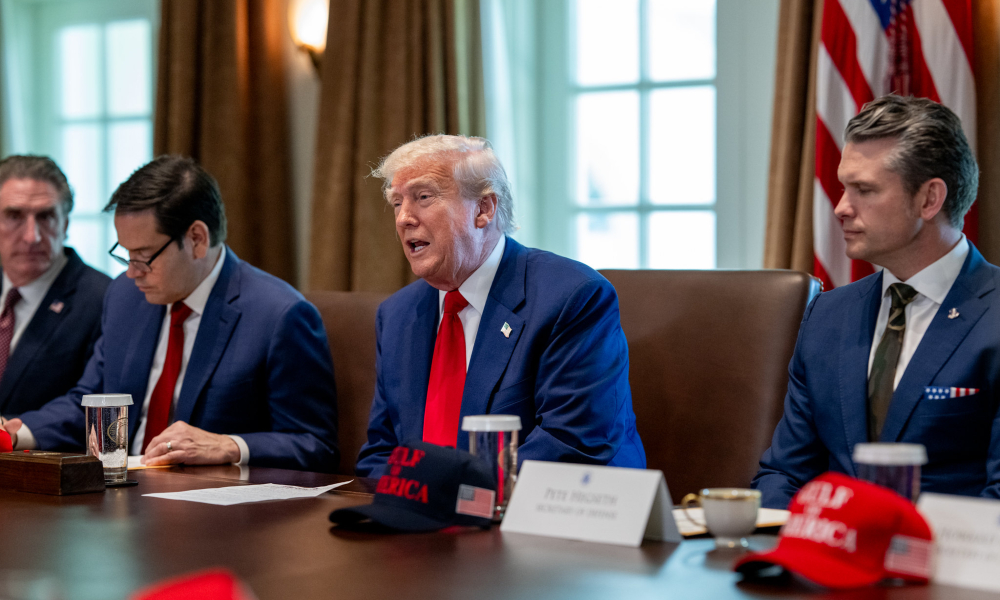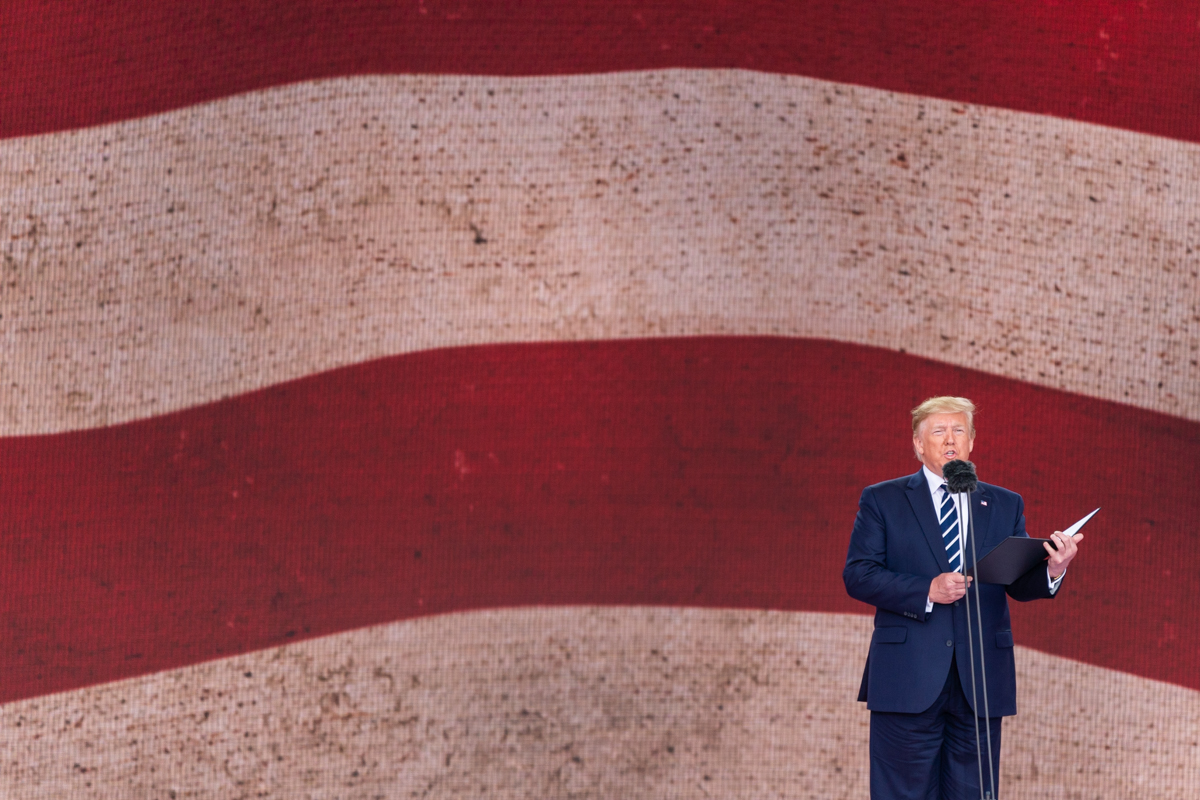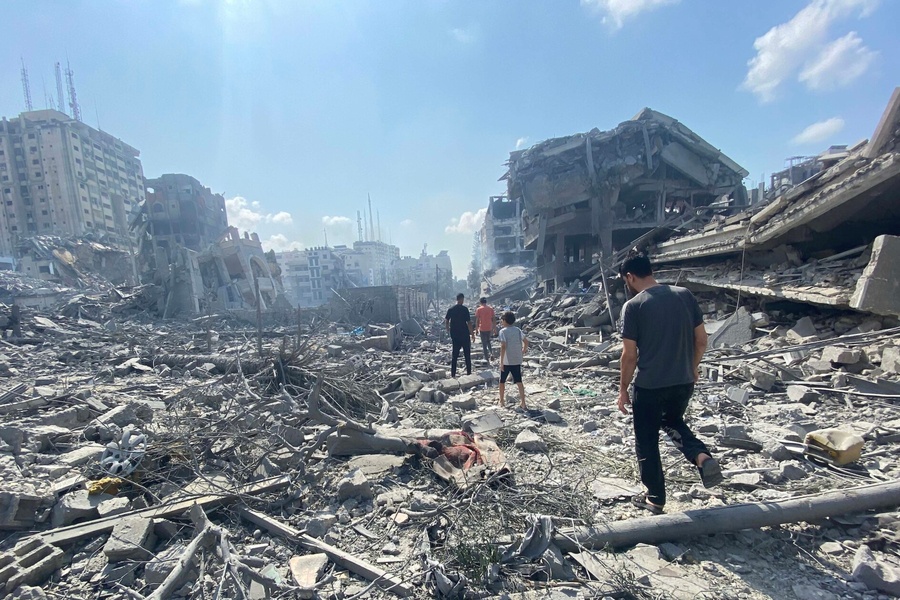The Revenge of the JCPOA

Published by The Lawfare Institute
in Cooperation With

Editor’s Note: In Trump’s first 100 days, the United States and Iran have engaged in serious negotiations over Iran’s nuclear program. RAND’s Raphael Cohen points out, however, that we have seen this movie before. Any feasible deal that administration officials propose will face some of the problems that plagued the deal that the Obama administration agreed to and that Trump abrogated in his first term. These include Iran’s unwillingness to abandon its proxies, the economic benefits of sanctions relief for Iran’s regime, and uncertainty about the program’s eventual status.
Daniel Byman
***
Ever since Iran’s nuclear program first became public, every U.S. administration has faced a dilemma—strike a likely imperfect deal or attack Iran’s nuclear infrastructure and risk becoming embroiled in another Middle Eastern war. A decade ago, the Obama administration concluded that the former was the lesser of two evils. After first trying a series of cyberattacks and economic sanctions against Iran, Obama chose a diplomatic route—signing the Iran nuclear deal formally known as the Joint Comprehensive Plan of Action (JCPOA) in 2015. At its core, Iran agreed to limit its nuclear program and to allow inspections in exchange for relief from international sanctions. At the time, the JCPOA drew ire from Iran hawks, including Donald Trump. A decade later, in an ironic twist of fate, the Trump administration will face much the same choice because, although administrations have changed, the underlying challenges have not.
At the time, most opponents of the JCPOA focused largely on three substantive critiques of the agreement. First, the agreement wasn’t “comprehensive.” Although it curbed Iranian uranium enrichment, it did not curb Iran’s missile program, the likely delivery mechanism for an Iranian nuclear bomb. Nor did the agreement do anything to roll back Iran’s vast network of proxy military forces throughout the Middle East that were threatening U.S. forces and allies in the region.
Second, the agreement offered Iran sanctions relief in exchange for its restrictions on Iran’s nuclear program. At the time, Iran had tens of billions of dollars sitting in foreign accounts. The JCPOA allowed Iran to tap these funds. Critics of the JCPOA noted that Iran could use this economic relief to nefarious ends, like upping its funding of proxies or other malign activities abroad. At the very least, the release of these funds would help the Iranian regime survive in the face of widespread domestic discontent.
Finally, critics noted that even if Iran abided by the agreement (which itself was in doubt), the original JCPOA wasn’t a permanent limitation of the Iranian nuclear program, but a pause. The agreement included a sunset clause that meant that key parts of the agreement constraining Iran’s enrichment capacity were set to expire in 10 to 15 years. Though the JCPOA required Iran to adhere to the Additional Protocol of the Nuclear Non-Proliferation Treaty and not pursue a nuclear weapon, Iran had also made and withdrawn that commitment before. Critics argued that once the JCPOA expired, Iran would be able to drop the Additional Protocol and sprint to develop a nuclear weapon. Consequently, the agreement was not a lasting solution but simply kicked the can down the road.
The Obama administration countered that the JCPOA, while imperfect, was the best deal that it could get at the time. Moreover, it argued that economic sanctions could “snap back” on Iran in the event of noncompliance. Finally, the administration claimed that the alternative—namely military action that likely would be ineffective and escalatory to the point of sparking a large regional war when the United States was trying to extricate itself from the Middle East to focus on more pressing concerns in the Indo-Pacific—was likely worse.
These arguments, however, failed to convince JCPOA skeptics, and the Trump administration abrogated the deal in May 2018 in favor of a “maximum pressure campaign” of strict economic sanctions to coerce Iran. The campaign destroyed the Iranian economy but failed to force Iran to abandon its nuclear program.
A decade after the JCPOA was first signed, much in the Middle East has changed. Thanks to the Abraham Accords, Israel now enjoys diplomatic relationships—if, at times, strained ones—with much of the Arab world. Iran has forged tighter bonds with Russia, thanks to the Ukraine war. And most important, the regional dynamic has been upended by Hamas’s Oct. 7, 2023, terrorist attack on Israel and the wars in Gaza and Lebanon. But the problem of the Iran nuclear program remains as vexing as ever. By some estimates, as of late 2024, Iran had enough highly enriched uranium to make five to six bombs.
The question now, as it has been, is how to stop Iran’s continuing nuclear development. After initially indicating he would back an Israeli strike on the Iranian nuclear program, President Trump instead chose to pursue a diplomatic option first, albeit with the threat of force in the background. What that deal might look like, if it materializes at all, is uncertain, but it will likely face many of the same challenges as the original JCPOA.
While Iran may be willing to compromise on its nuclear program (it notably has walked up to—but deliberately not yet crossed—the nuclear threshold), Iran has also signaled a lack of interest in a comprehensive deal. Islamic Revolutionary Guard Corps spokesperson Ali Mohammad Naini stated flatly, “National security and defense and military power are among the red lines of the Islamic Republic of Iran, which cannot be discussed or negotiated under any circumstances.” Reportedly, this includes no concessions on either its missile program or its support for proxies.
Admittedly, some of these statements might be bluster or an opening negotiating position before a compromise can be reached. But this is not a new Iranian stance, and Iran has plenty of reasons to avoid a comprehensive deal. Iran is arguably more vulnerable today than a decade ago. Israel’s offensives have decimated (though not destroyed) Hamas and badly bloodied Hezbollah. The overthrow of the Assad regime in Syria was yet another major blow for Tehran. And with the Trump administration’s stepped-up campaign in Yemen, another major Iranian proxy—the Houthis—are now in the crosshairs as well. Consequently, if Iran gives up its nuclear program, it will be stripped of many of the primary pillars of its defenses—a tall order for Tehran to accept.
Any new Iran nuclear deal would almost certainly include some sort of economic carrot. Iran’s sagging economy was supposedly one the key factors that prodded Iran to negotiate in 2015. Today, the Iranian economy is similarly in tatters. Inflation is running between 40 and 50 percent and between one-in-five to one-in-four Iranians live below the poverty line. That gives Tehran a strong incentive to negotiate, if not out of general concern for its population, then at least to stave off internal instability.
And the U.S. may not be any more successful at preventing the Iranian regime from using an economic windfall for nefarious purposes—like reconstituting its proxy network, funding its missile program, or undermining regional stability—than it was a decade ago. After all, tracking financial flows inside a country is tricky business. Moreover, money—at its core—is fungible. Even if resources from the deal go to peaceful purposes, relieving economic pressure could give the Iranians room to redirect resources to nefarious purposes. It is hard to imagine how any deal could foreclose Tehran from funding malign activity entirely.
Finally, there is the question of whether a new deal would be a permanent or stopgap measure. As the history of the JCPOA demonstrates, any treaty is only good as long as all parties are willing to abide by it—and that is by no means guaranteed. Iran’s ambitions to be a major player in the Middle East, and maybe even a regional hegemon, give it plenty of incentives to try to wiggle out of whatever shackles a new nuclear deal places on it. A future U.S. administration may also have reason to break an arrangement it deems to be flawed. And then there are the outside actors who won’t be party to the deal itself—most notably Israel—who will reach their own conclusions about the merits of the agreement and may take matters into their own hands.
In sum, in any new nuclear diplomacy, the Iranians likely will push for the agreement to contain many of the same faults as the original JCPOA. They will want to focus narrowly on nuclear weapons rather than the full range of their malign activities and not want any limits on economic relief. And Tehran will likely push for such an agreement to be explicitly or implicitly timebound, especially given the collapse of the first nuclear deal.
Even so, there are still benefits to the Trump administration’s current diplomatic efforts. Despite these headwinds, the administration may be able to pull off a better deal. It may want to demonstrate to the U.S. public that it has exhausted all viable alternatives before backing the use of force. Or the Trump administration may decide that despite whatever faults a new deal may contain, making a deal is still preferable to potentially messy military action.
If so, the JCPOA—the decade-old political lightning rod—will have exacted its revenge.





